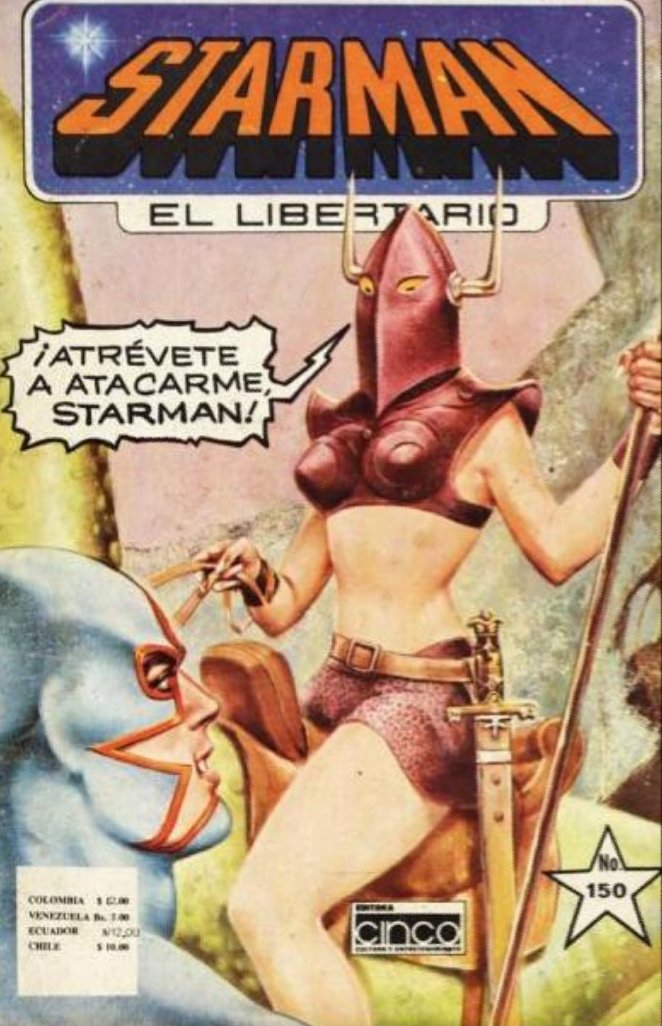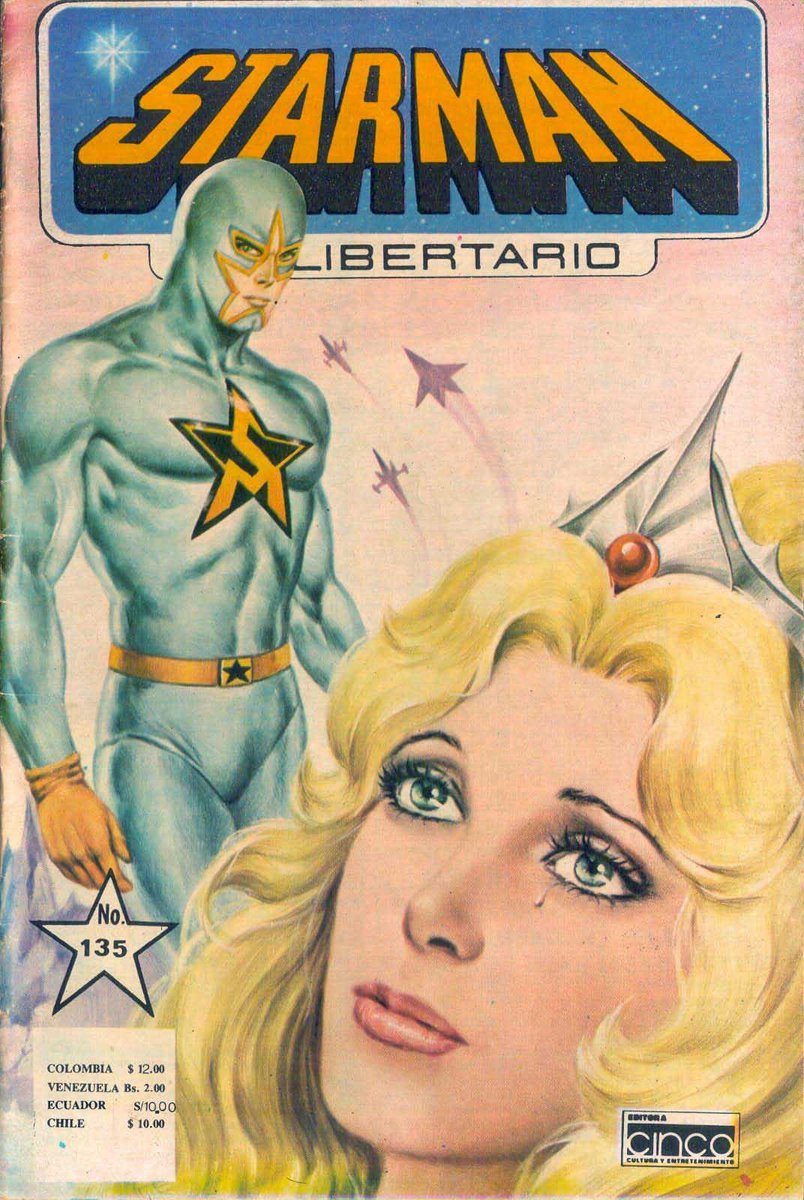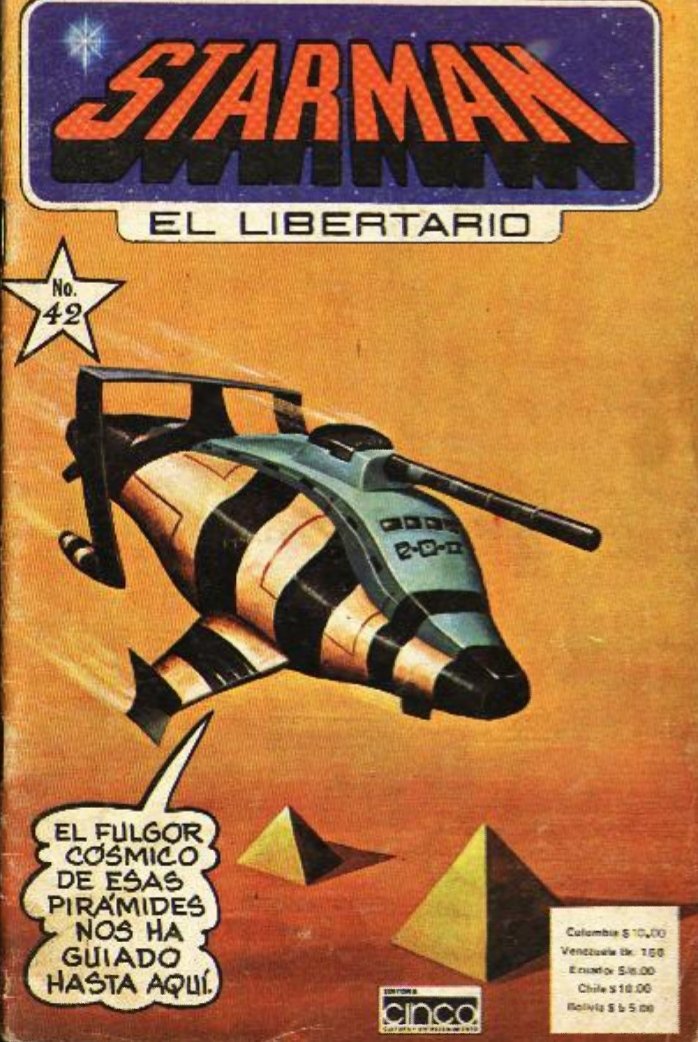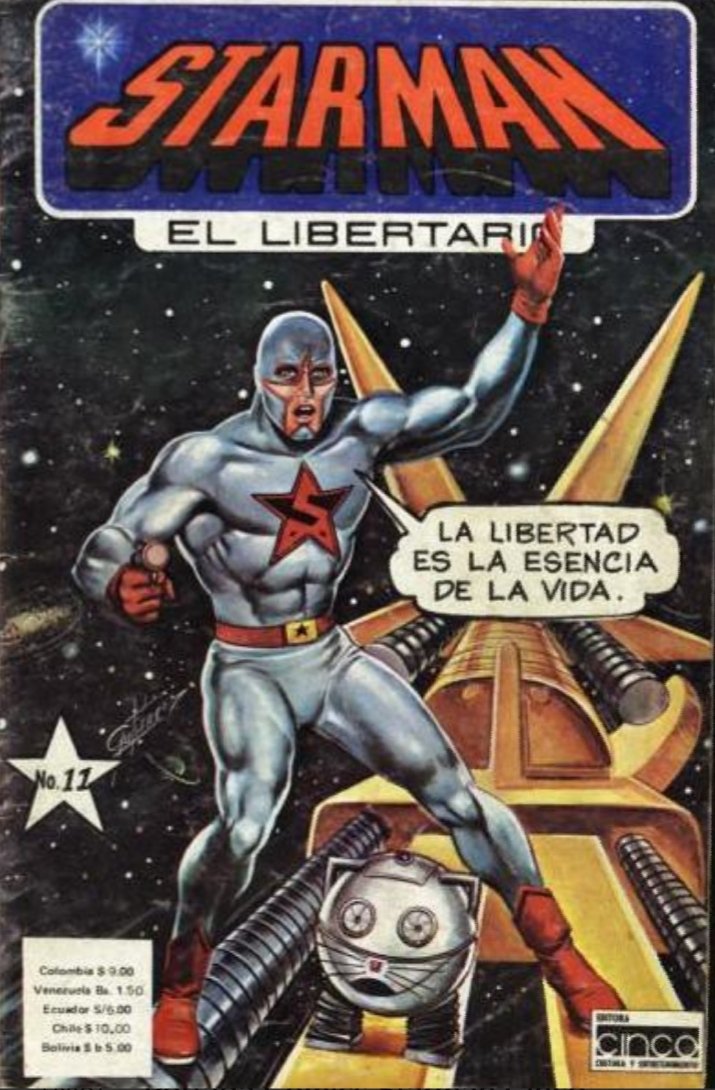Today in pulp... let me introduce you to Starman!
No not that one, THIS one: "El Libertario!" #ThursdayMotivation
No not that one, THIS one: "El Libertario!" #ThursdayMotivation

Starman the Libertarian is a South American superhero from the 80s, who will be familiar to Colombians of a certain age. You could usually find him on most news stands. 

Created by Rafael Curtberto Navarro - who also created Kalimán: El Hombre Incredible - Starman was first published in 1980 by Editora Cinco and ran for over 100 issues. 



Set in the futuristic world of 2005 Earth has suffered a huge nuclear war where most of the population has mutated into creatures called Tarhumans. 

Not only that but Earth is now ruled by the evil space tyrant Moloch, who destroyed the rebel forces of Liberio, Starman's father. 

Libero's army retreats to the moons of Jupiter where his son Starman is given amazing super powers, courtesy of the solar wind. 

Aided by his robot cat Gatonico, Starman returns to earth to do battle with the evil Moloch and his army of Tarhumans. 

Once Earth is freed of tyranny Starman, Dr. Hana and Gatonico continue their mission to spread justice and freedom across the galaxy. 

The series certainly takes a few liberties with copyright: Dr. Hana has a very Princess Leia vibe and some of the spaceships are clearly copied from Chris Foss illustrations. 



However for lovers of liberty and fans of epic space opera Starman El Libertario is certainly a hero to celebrate!
More forgotten pulp heroes another time...
More forgotten pulp heroes another time...

• • •
Missing some Tweet in this thread? You can try to
force a refresh


























